How To Make A Terrarium: How to make a beautiful terrarium in an apothecary jar, using fish tank charcoal to create a micro-climate without mold.
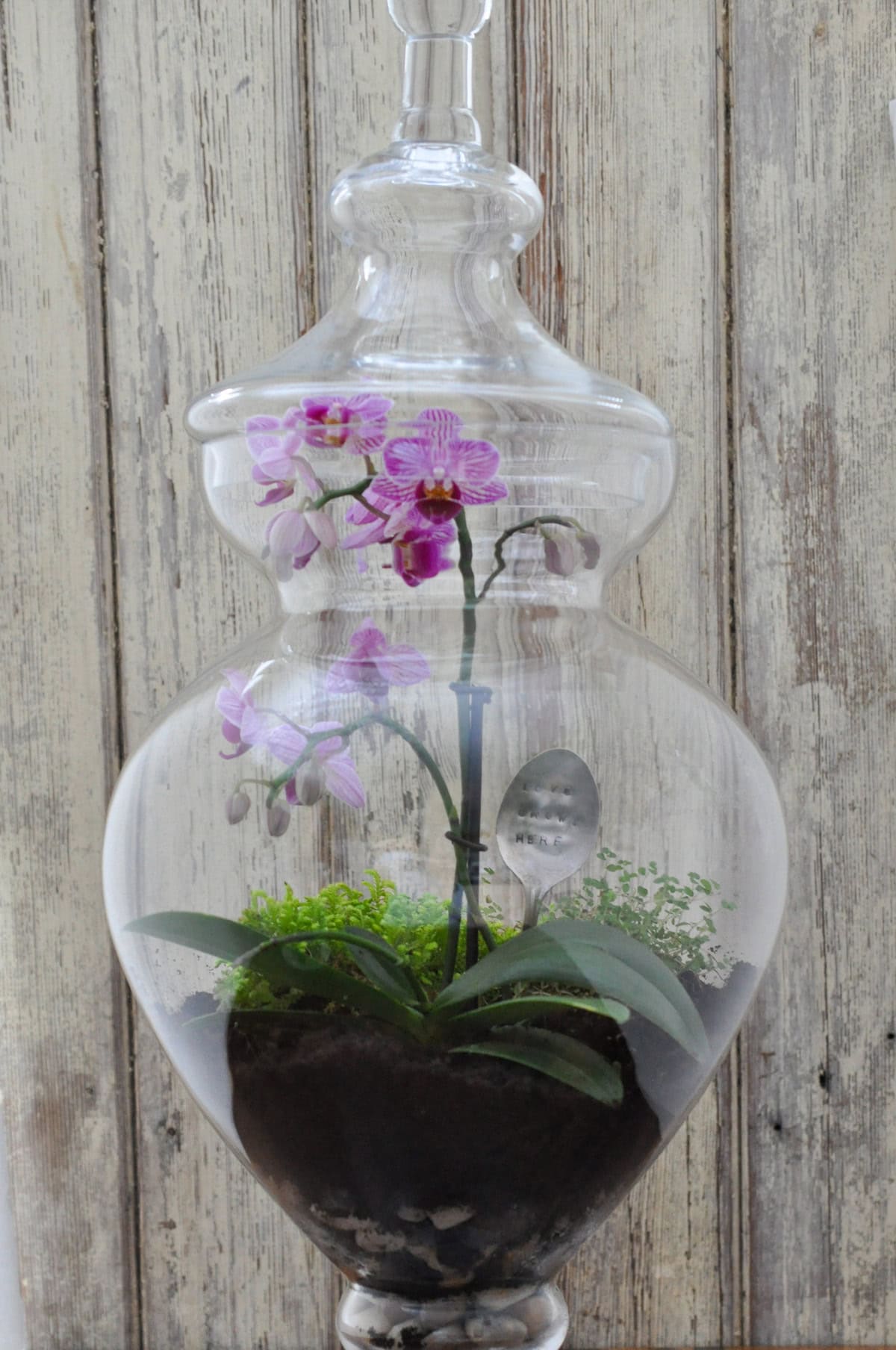
Jump to:
Have you noticed that terrariums are back in fashion? I have a vague memory of being a little girl and my mom making one. Now I'm starting to see them around again so I think they're back. Today I'm sharing how to make a terrarium in an apothecary jar.

Creating A Terrarium Micro Climate
Terrariums are traditionally made in a closed container, and the terrarium acts as its own little ecosystem.
After adding a little water when they're first planted, the water stays in the closed terrarium container and re-circulates, creating its own little water cycle and micro-climate in this closed environment.
You can also make a terrarium with an open top, which you'll need to water just like any house plant. I also made one open terrarium.
In a closed terrarium you need to get the balance of things just right. Too much moisture and mould will grow and cause everything to die. Try using a spray bottle to mist the plants if you think they need more water. Too little water and it will dry out and also die.
For the enclosed terrarium, watch for any condensation that forms on the edge of the glass. Condensation is a sign of high humidity inside of the jar. If you get some excess water, just take off the lid for a few hours so it can evaporate.

Also try to plant the plants so that nothing is touching the sides of the glass, it can lead to mold. If you see a leaf dying, remove it because you don't want anything breaking down, or getting moldy in your terrarium.
Charcoal
Charcoal is a great addition to your jar terrariums because it acts as a natural cleansing filter to the water helping to remove any unwanted matter as it circulates within the terrarium. It also has natural anti-toxin properties that help keep mould and mildew at bay.
I found some charcoal at the pet store with the fish tank equipment. You can buy it loose in large containers, or just look for a little bag designed for fish tank filters. It will be labeled "Activated Carbon". You can also look for horticultural charcoal at your garden store.
Best Plants for a Terrarium
We used a mini orchard as the main plant in our terrarium. It's a perfect focal point. Mini orchids tend to do well in terrariums because they like a humid environment. When your choosing the types of plants for your own terrarium you will first of all need small plants that can fit in the space. Try to choose plants that have similar needs and grow in similar environments. Tropical plants work well together because they enjoy high humidity. Woodland plants like moss and ferns work well together because they also like more damp conditions. Succulents can do really well in a terrarium too, but if you're planting succulents be sure to plant only succulents so you can keep the moisture levels lower.
You will want to choose little plants that don't get to big. Miniature plants are sometimes a good idea for terrariums and the perfect size for not out growing the space. You want to make sure that everything has enough space to not be right up against the sides of the glass, which can lead to mould problems.
Choosing Your Jar
We made our terrarium in a beautiful apothecary jar. You want to choose a clear glass jar that's large enough for your plants. Since we were using a mini orchard in this terrarium we needed to choose a jar that was tall enough for it. You can also make a terrarium in a mason jar or even upcycled pickle jars. A little jar is perfect for smaller plants. You will want a jar that has a removable lid that closes securely enough to create the closed system and the water from evaporating. You will also want the opening at the top of the jar to be large enough to give you easy access for planting the terrarium.




I wanted to use a mini orchid in my apothecary jar terrarium. Also I found some little woodland plants at my local nursery. Small plants like moss and small ferns work well.
I kept the orchid in it's own little plastic pot that it came in, since orchids like to be in special orchid soil -being that they're so special. 😉
The other small house plants I used were a little too big, so I broke them up into pieces, and took some of the soil off the bottom. Don't worry these type of plants can be broken up like this with no damage to them because they have quite shallow root systems.

Terrarium Accessories
Once the plants were all in, I wanted to add a little spoon sign that said "Love Grows Here". I thought it would be especially sweet for Valentine's Day -and we're all about sweet around here.
Beginning with a silver spoon I found at an antique fair, I used a hammer to flatten it out. Next I used metal letter stamps to add the words. Mine are 3mm size.
After the letters are stamped, go over the words with a sharpie, then scour off any excess with a pot scrubber. It leaves a little black in the indentations for the letters and helps them show up better. You can read the step-by-step tutorial to make the stamped garden markers here.
Other fun ideas for terrarium accessories would be any cute fairy garden accessories or miniature figurines. A larger rock can make a nice decorative rock for the top too as a nice accent element.

Where To Place Your Terrarium
Terrariums like to be in spot with indirect sunlight. East or west facing windows tend to be a good option and tend to offer perfect indirect light. Be careful with south-facing windows as they can be a little too much direct sunlight, and too much heat in the terrarium.
I really love how they turned out. Let's hope I can keep them happy. I did give them a little drink of water after they were all planted.
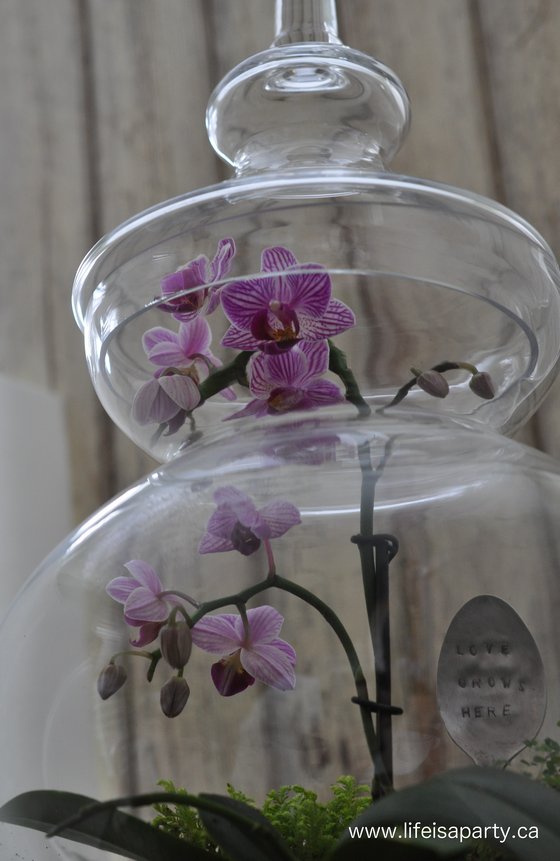

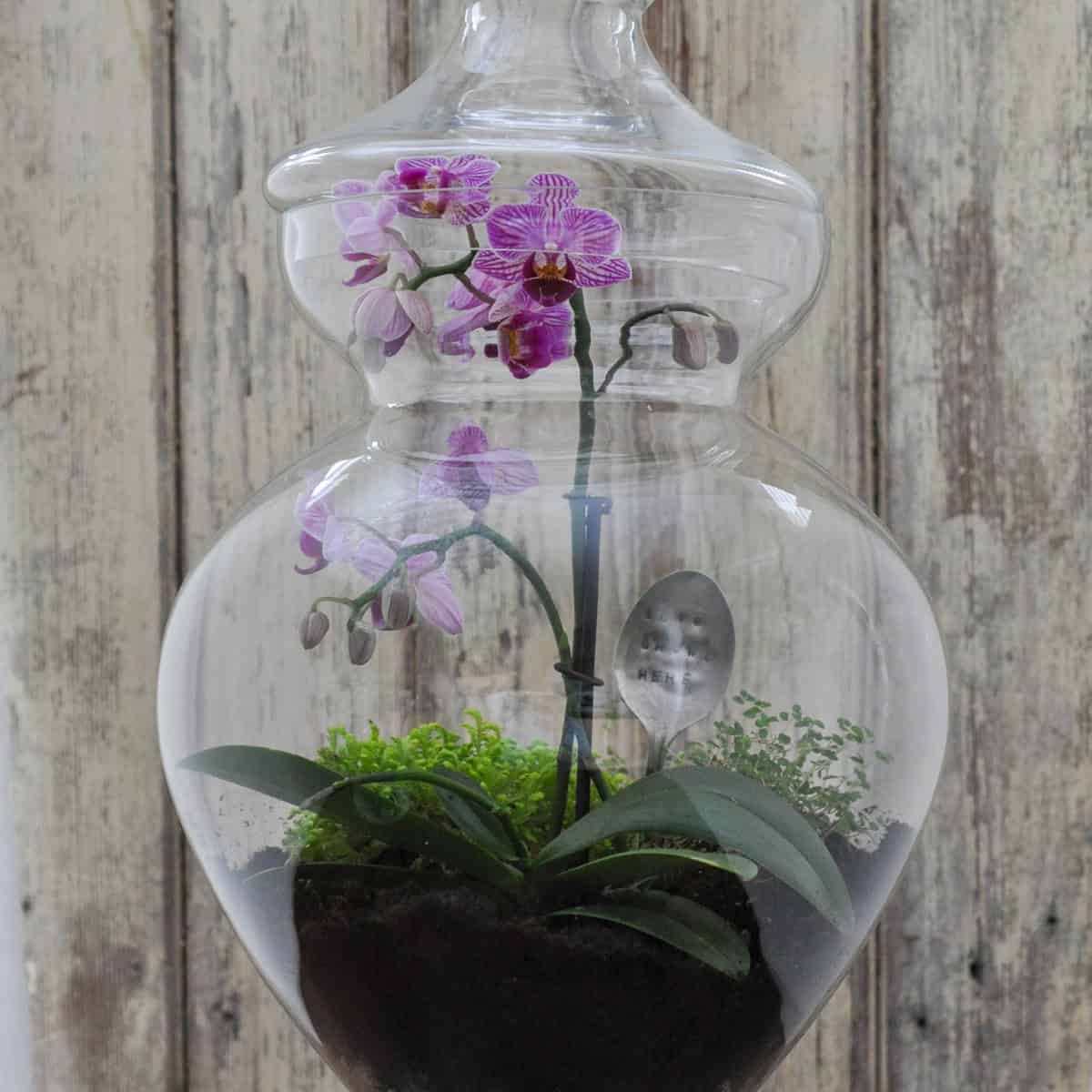
Materials
- glass container with a lid
- rocks for drainage
- activated carbon charcoal
- soil
- smaller plants
Instructions
- To make a DIY terrarium, you start with an inch or two of rocks in the bottom of the container as drainage material so your plants roots are sitting in water.
- Next on top of the rocks add a thin layer of charcoal. This is the best way to absorb any excess moisture, and help keep the little eco-system from becoming moldy. Mold = trouble. We left our charcoal in the bag, or you can open it and add it that way.
- On top of the layer of rocks and the charcoal bag, add in some potting soil. Not too much to start, since you want room for the plants and you can add more around them after.
- Then add any small accessories, fairy garden accessories, or decorative rocks.
- Lastly, give your terrarium a small amount of water and place the lid on. If condensation forms on the glass you can remove the lid for awhile to regulate it.
It's a snow day here, and it's so nice to have something green and living, and a little reminder that although it doesn't look like it outside today, spring is coming.
With a How To Make A Terrarium project to keep us busy, life really is a party!
More Inspiration
You might also enjoy our Terrarium in a Mason Jar here.
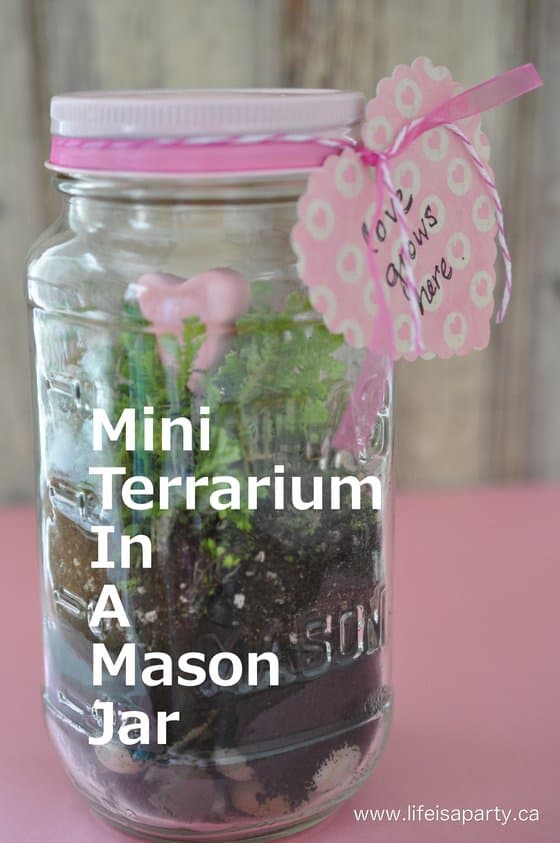
Also check out our Teacup Fairy Garden here.
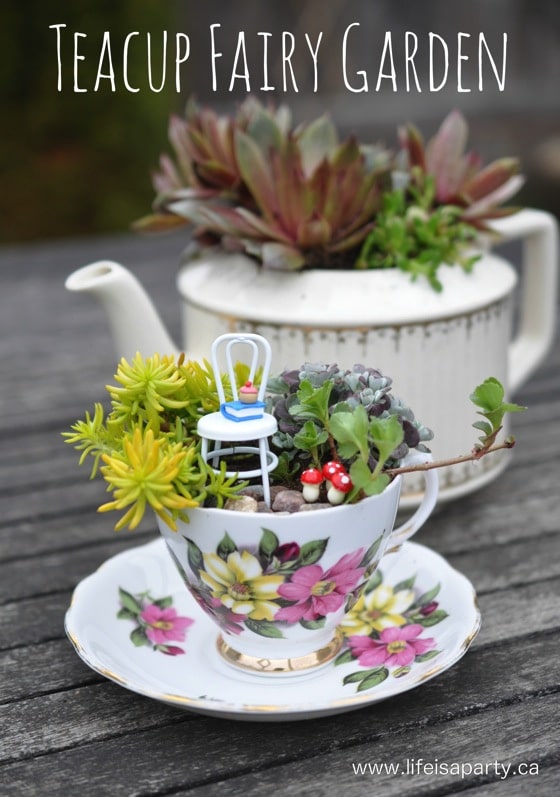
You might also enjoy our Teacup Fairy Village Gardens here.
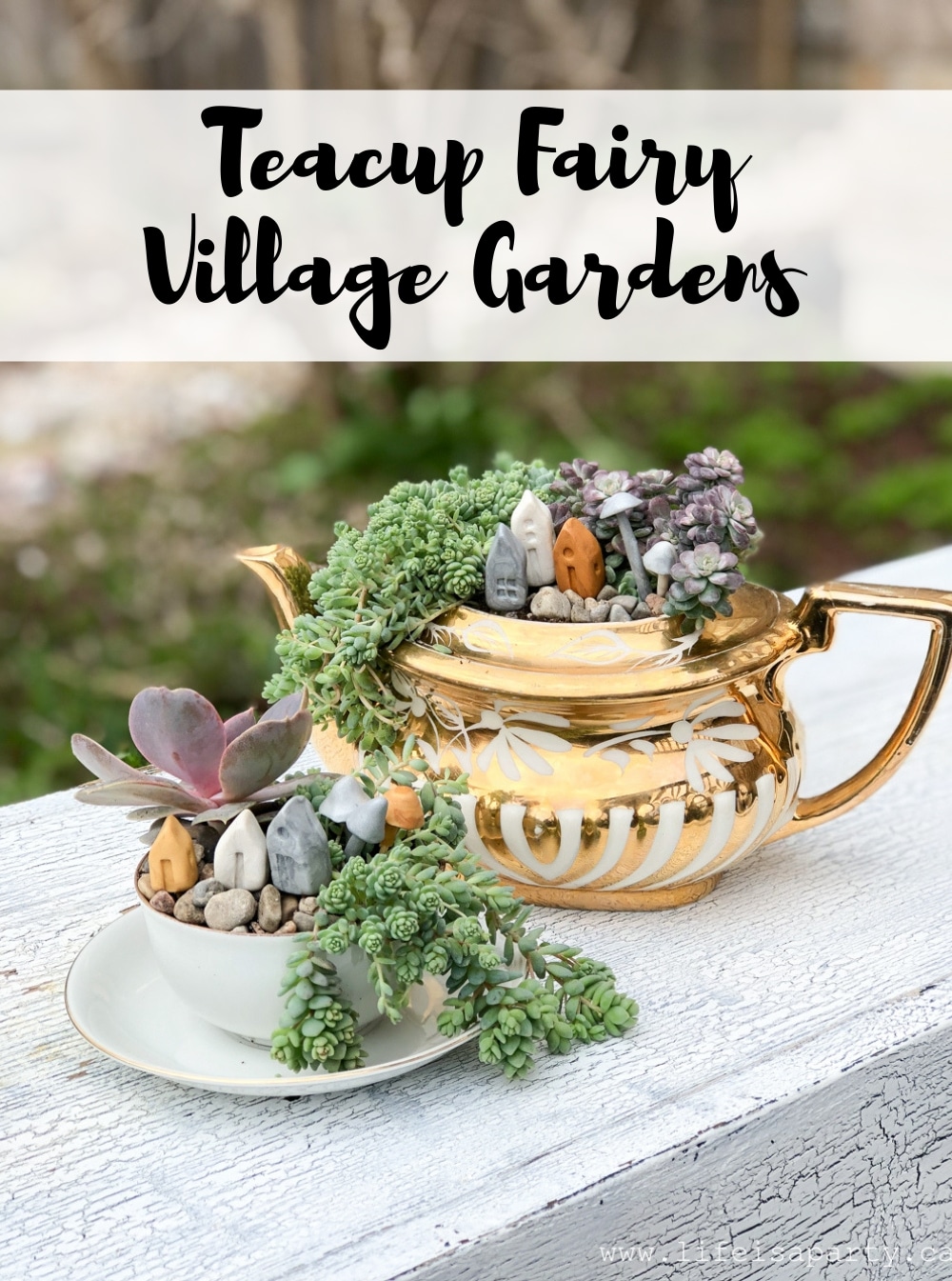





dnr says
Hi Ashley,
The orchid did last quite awhile, maybe about a month if I remember right. But after that I took the terrarium apart and use the container for something else. I'm always changing things around here. Hope this helps.
Dannyelle
Ashley says
Is the orchid still alive?